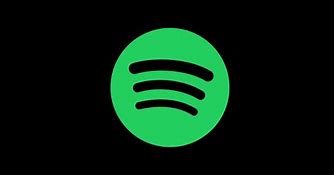Swedish music streaming service Spotify has reportedly resolved a recent glitch that caused its user’s created playlists to disappear. This coincides with a recent spike in Spotify’s membership fees and ongoing debate about the service’s lack of lossless audio quality, which heightens the company’s concerns about customer contentment.
Customers of Spotify, both on Android and iOS yesterday, took to social media to lament an inconvenience that their custom selection of songs was no longer available even though they could still play music without any problems and auto-generated playlists like “Daily Mix” remained unaffected.
The calls by several Spotify users especially on X (previously known as Twitter), seeking clarity on whether they’re the only ones affected by the issue, drew the attention of the Swedish company which swiftly swung into action to resolve the issue.
The company further confirmed that there was indeed an issue but insisted that it arose from technicality rather than intentional.
According to reports, the glitch also impacted user’s ability to see playlists of friends and was most noticeable to users accessing Last.fm via desktop and web browsers, causing panic as playlists are one of the central offerings to Spotify’s customers, according to online sources.
Originally, subscribers rely on these lists to categorize their collection and provide people with a glimpse of what they listen to and rely on every day.
Not long after the public outcry were noticed, Spotify, in what seemed like a swift response to the widespread issue, quickly mobilized its technical team to identify and resolve the bug, acknowledging the inconvenience caused and issuing a statement that confirmed that they were aware of the problem and were working on a solution.
The company thereafter disclosed that it had resolved the issue and that user-created playlists were already restored. But some users continued to experience the issue and did not cease to lay complaints.
The company which portrayed itself as one that priorities customer satisfaction then recommended that affected users log out of their accounts and log back in to resync their account information, restore their playlists fully and ensure that all data was correctly updated across devices.
This proactive approach and transparent communication by Spotify played a crucial role in managing the situation, restoring confidence and maintaining its reputation as a leading music streaming service even as many users expressed relief as soon as the issue was addressed.
In a related development, Spotify has announced a hike in the prices of its premium subscription plans in the US.
This is the second time the music streaming company is announcing an increase in price of its services within a one-year space and this has raised concerns amongst users.
According to the company’s CEO, Daniel Ek, the recent hikes were a result of Spotify’s quest to invest more in its product features and grow stating that it needs the increased profit to do so.
Ek explained that if the company did not take productive steps, it may not be able to achieve its goal. This spurred its decision to increase its rates for premium plans including Premium Duo and Family plans unlike the previous hike in July 2023 which had only the Family plan in mind.
According to available data, the company updated its prices for existing subscribers in the US to $11.99 for individual plan, representing a $1 dollar increase and $16.99 for Duo plan, representing a $2 increase while Family plan now costs $19.99, representing a $3 increase. Student plan however remains at $5.99 123.
As concerns are continually raised over the increase in prices, Spotify Premium users, both current and potential, are predicted to be directly impacted. Although there will be advance notice to current subscribers and a grace period to consider their alternatives, the changes will eventually impact their membership fees. User behaviour may also change as a result, with some subscribers assessing the service’s value proposition in light of the increased costs.
Spotify’s price increase could also have an impact on the general dynamics of the music-streaming industry with rival platforms and services witnessing shifts in user migration trends and some subscribers looking into other possibilities in reaction to the changed pricing structure. Industry experts and analysts have also indicated interest and speculations about how Spotify’s move will affect the larger industry environment, including possible ramifications for rival platforms’ pricing methods.
But ultimately, the rationale provided by Spotify for the price increase highlights the company’s dedication to maintaining its status as a top music streaming service by means of ongoing innovation and investment. Hopefully, these adjustments will over time, have an influence on both subscribers and the industry as a whole, influencing pricing and competitive dynamics in the music-streaming sector.




